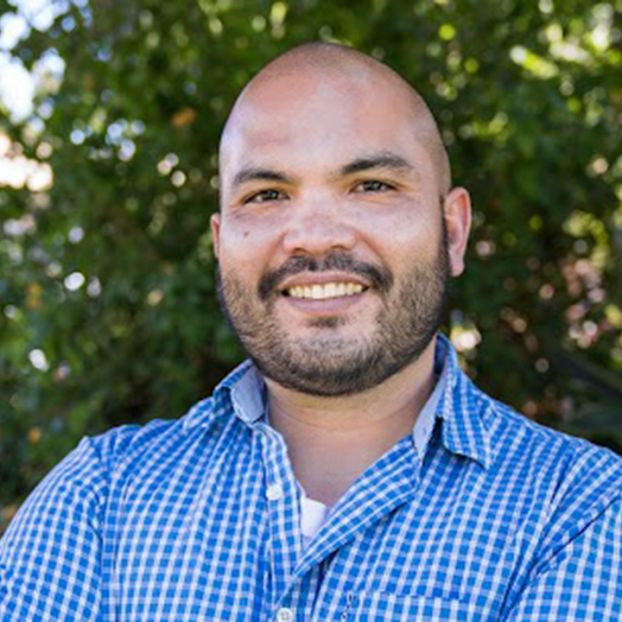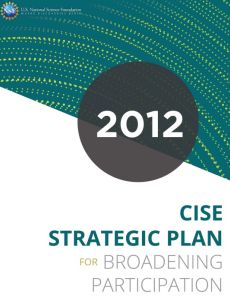The need for Broadening Participation in Computing
Investments by CISE fuel the nation's breakthrough discoveries. CISE's vision is that its researchers reflect the full diversity of the American public.
The scale of the challenge is reflected in what NSF leadership and National Science Board term the "missing millions" — those who are yet to be engaged in the STEM workforce so that it reflects the racial, ethnic and gender representation of the general population. Learn more in the National Science Board's Vision 2030 report.
BPC promotes a diverse and inclusive computing workforce and research community by addressing underrepresentation and disparities among various groups, including:
- Women.
- Persons with disabilities.
- Black and African Americans.
- Hispanics and Latinos.
- American Indians.
- Alaska Natives.
- Native Hawaiians and other Pacific Islanders.

Credit: David Blakeslee Photography
Funding opportunities

Broadening Participation in Computing Program
This program supports research to develop, implement and evaluate effective strategies for engaging underrepresented students at all levels of education.
Supplemental funding
If a researcher has an active award with a funded BPC plan, they may be eligible for supplemental funding of up to 20% of the original award to support BPC activities. Eligible programs are listed under “programs that require a BPC plan” below.
The Broadening Participation in Computing Initiative
Programs that require a BPC plan
- CISE: Core Programs – Medium awards.
- CISE: Core Programs – Large awards.
- Secure and Trustworthy Cyberspace – Medium and Frontiers awards.
- Cyber-Physical Systems – Medium and Frontiers awards.
The costs for BPC activities are separate from the stated budget limits for proposals to these programs. Proposals recommended for award may receive supplemental funding to carry out BPC activities.
BPCnet: tools and resources
BPCnet is a resource for the computing community to learn about BPC and engage with ongoing initiatives to diversify computing. CISE began funding BPCnet in 2018.

Credit: courtesy of UCSB
Types of BPC plans
NSF accepts two types of BPC plans:
- Standalone plan: Describes BPC activities and how the submitting PIs will engage in them.
- Connected plan: Lists PI engagement with activities from a verified departmental BPC plan.
A departmental BPC plan describes the current focus of BPC activities across one or more departments or academic units and how they will address the underrepresentation of certain populations. Departmental BPC plans must be verified by BPCnet.
More about BPC plans
- Search verified departmental plans.
- Get advice on creating a departmental plan.
- Learn more about the types of BPC plans.
Elements of a BPC plan
A BPC plan outlines how a project will contribute to broadening participation in a meaningful way by describing:
- Goal and context. Does the plan describe a goal and the data from the institution(s) or local community that justify that goal?
- Intended population(s). Does the plan identify the characteristics of participants from an underrepresented group, including school level?
- Strategy. Does the plan describe activities that address the stated goal(s) and intended population(s)?
- Measurement. Is there a plan to measure the outcome(s) of the activities?
- PI engagement. Is there a clear role for each PI and co-PI? Does the plan describe how the PI is prepared (or will prepare or collaborate) to do the proposed work?
Tips for creating a BPC plan
PIs should choose activities that correspond to their level of preparation, especially if they are new to BPC. At the same time, every effort should be made to articulate a plan in which the actions and impacts are clear and compelling.
Therefore, BPC plans should:
- Leverage existing, successful diversity and/or outreach activities that are available on campus or across the local region.
- Focus on specific barriers or challenges that are present in the context of the institution.
BPC plans should be responsive to several factors:
- The underrepresented population(s).
- Geographic location.
- Type of engagement (national, regional, institutional, departmental, classes and/or research group).
- Type of activity (such as student and faculty retention, outreach and recruiting, etc.).
- Level of engagement (post-graduate, graduate, undergraduate, K-12).
- Institutional support.
- Most importantly, one's vision for addressing underrepresentation.
Get help
Ask an expert
BPCnet offers free BPC consulting to assist researchers in developing BPC plans. This service is funded by CISE.
Frequently asked questions
Get answers to common questions about the BPC Initiative.


